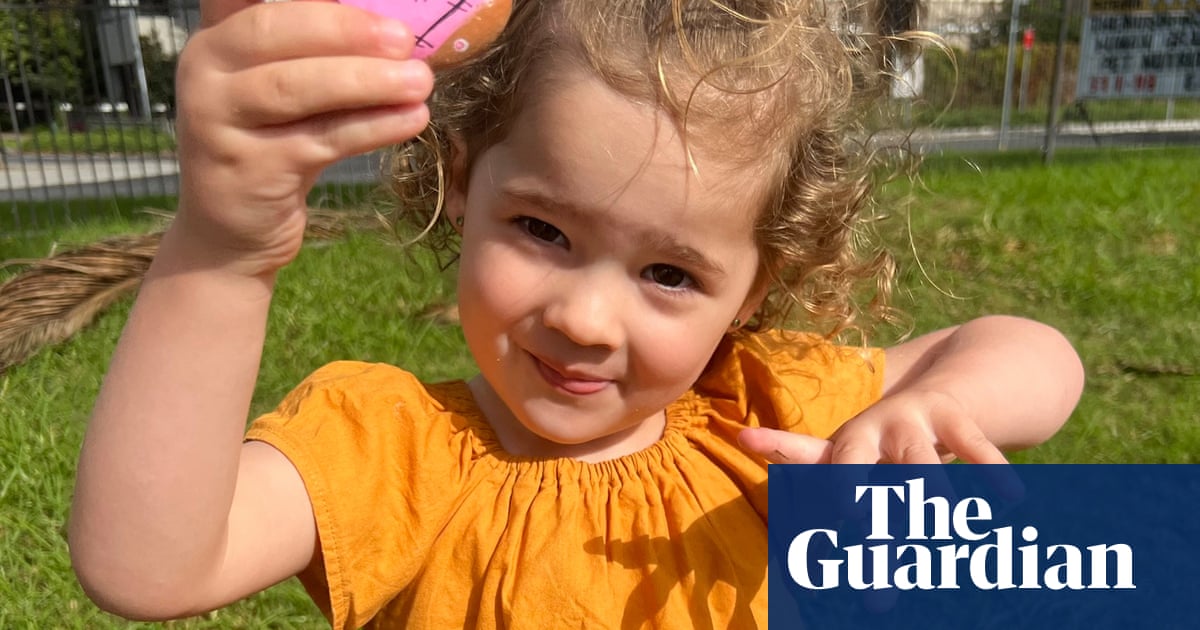A senior official who oversees the emergency transport of critically ill children inNew South Walesbelieves two-year-old Pippa Mae White’s septic shock death was the result of an “absolutely devastating” bacterial infection, an inquest has heard.
Kathryn Browning Carmo, an associate professor in neonatology and acting director of the Newborn and Paediatric Emergency Transport Service team (Nets), on Tuesday told an inquest into Pippa’s death the young girl likely had Group A Strep.
Pippa died on 13 June 2022, two months before her third birthday, after doctors and nurses at the hospitals in Cowra and Orange assumed she had an acute viral illness.
The deputy state coroner, Joan Baptie, is examining whether her death was preventable and whether she received appropriate medical care.
Sign up for Guardian Australia’s breaking news email
Giving evidence at the inquest, Browning Carmo said that from late 2022 until early 2024, there was an increase in cases of invasive group A streptococcus (iGAS). During that period, 77 cases were referred to Nets and four of these children died, she said.
Browning Carmo said although Pippa’s blood was not tested for the disease, she thought the girl “probably” had it.
The cases and the fatalities recorded by Nets were documented in a paper published last week in the Journal of Paediatrics and ChildHealth, which said 40% of the patients displayed clinical signs of septic shock.
Only five cases of iGAS had been detected in the five years before late 2022, Browning Carmo told the inquest.
Browning Carmo said iGAS was an “absolutely devastating illness” that was much more aggressive than other bacterial infections of this nature and which resulted in “catastrophic” cases of sepsis, a potential fatal inflammatory response to an infection.
The inquest previously heard that Pippa was presented to Cowra hospital about 2pm on 12 June 2022 with a fever, vomiting, and a heart rate of 171 beats per minute, considered in the “red zone” for sepsis.
She did not have a blood test until nearly 4am on 13 June, after she was transferred to Orange hospital, which revealed she had a serious infection.
She was administered antibiotics and given a chest X-ray, which showed she had pneumonia that had caused a “complete whiteout” of her left lung.
Browning Carmo on Tuesday told the inquest she had seen cases of children with iGAS who appeared to be “very comfortable” only to have their lungs very quickly fill with fluid.
“They could have no pleural effusion to complete whiteout within hours,” she said. “It was an absolutely devastating illness.”
Sign up toBreaking News Australia
Get the most important news as it breaks
after newsletter promotion
The inquest previously heard doctors at Orange called the Nets team just after 6.10am to take Pippa to Westmead children’s hospital. A plan was made at 8.30am to put Pippa in an induced coma and intubate her before her chest was drained.
But this didn’t occur immediately because the operating theatre was busy, the inquest heard. Because of shift changes and weather, the Nets team didn’t arrive until 10.10am.
Pippa never left Orange – she suffered two cardiac arrests and died just after 1pm.
Her parents, Annah and Brock, are pushing for reforms to the way possible paediatric sepsis cases are treated and to empower families of sick children to escalate their concerns.
The paediatric nurse in charge of Pippa’s care in Orange, Roslyn Sadler, on Tuesday told the inquest she could recall Annah telling her she had asked for her daughter’s blood to be tested when she was in the hospital’s emergency department.
The executive director of nursing at the Western NSW local health district, Associate Prof Adrian Fahy, told the inquest it was “quite remarkable” hospital staff didn’t investigate the possibility of sepsis.
“Sepsis training had been really quite prevalent across NSW health for a number of years,” he said. “I was concerned to see sepsis hadn’t been considered and the sepsis pathway hadn’t been referred to.”
The inquest continues.
